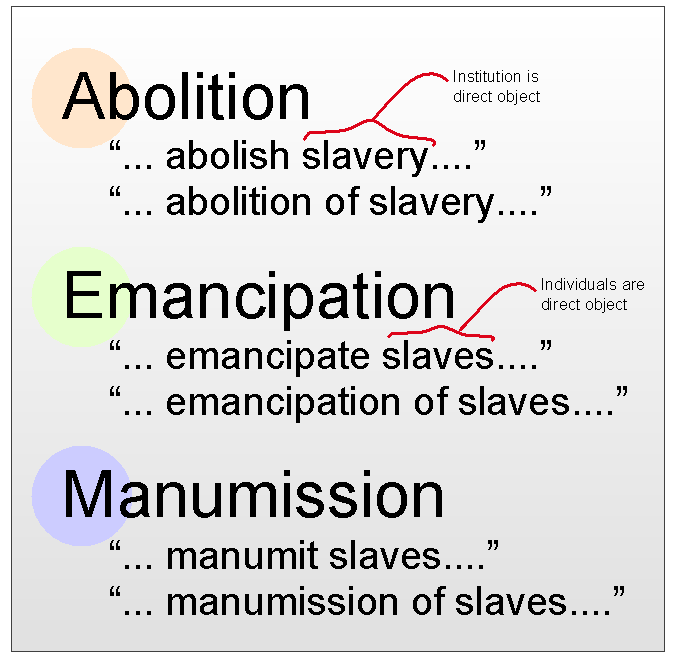As the global animal-protection movement grows, some slavery-related terms are becoming more popular. Here is a quick discussion of how three key terms relate to each other.
Abolition
The word “abolition” pertains to the legal institution of slavery or, more specifically, to those laws that permit one being to enslave another being in a given legal jurisdiction. “Abolition” occurs when a given jurisdiction abolishes this legal institution such that the given state or country no longer recognizes a legal possibility of one individual “owning” another.
Abolition is an event that occurs at a particular moment in time, namely, when the given jurisdiction makes slavery illegal. With respect to human beings in the U.S., that event occurred with the passage and ratification of the 13th Amendment to the U.S. Constitution (1865). With respect to other animals, that event will occur when the Abolition Amendment is passed and ratified.
Emancipation
Where “abolition” looks to the legal institution, the word “emancipation” looks to the individual. Specifically, “emancipation” refers to the transition of an individual from being a slave to being free, from being “property” to being a “person.”
Like abolition, emancipation occurs at a particular moment in time, namely, when that transition from property to person occurs. The particular mechanism whereby emancipation is accomplished may be the above-described public act abolishing the institution of slavery itself (i.e., abolition).
Emancipation may also result from a governmental action that frees one or more particular slaves but leaves the institution of slavery intact. With respect to humans in the U.S., for example, President Abraham Lincoln’s “Emancipation Proclamation” (issued Sept. 22, 1862) forever emancipated human slaves in those states that were “in rebellion” as of Jan. 1, 1863. But this action did not end the institution of slavery itself throughout the U.S. Thus, this action was not an “Abolition Proclamation.” Abolition did not occur until the 13th Amendment, described above.
With respect to other animals, the Live Animal National Defense Act (the “LAND Act”) will serve as an interim measure and is analogous to the Emancipation Proclamation in that respect. The LAND Act will, upon passage, forever emancipate all animals who live on federal lands.
Meanwhile, emancipation may also be accomplished through private act, which is called “manumission,” described below.
Manumission
Like emancipation, “manumission” looks to the individual. Specifically, “manumission” refers to the same transition to which “emancipation” refers but also provides additional information, namely, that the emancipation of a given slave was the result of the voluntary act of the given individual’s so-called “owner.” In short, manumission is the act of a slaveholder voluntarily emancipating one or more of his or her slaves, even though the given jurisdiction still recognizes the legal institution of slavery.
In the U.S., with respect to humans, a famous case of manumission was that of Robert Carter III, a Virginia plantation owner who manumitted over 500 human slaves. With respect to other animals, manumission can be seen in the case of an “owner” who converts his or her dairy farm into an animal sanctuary and allows his or her former slaves—so-called “livestock”—to live out their natural lives in freedom.
Unlike abolition, manumission does not require governmental action. Anyone who “owns” an animal can effectively manumit that animal today and is encouraged to do so by taking that animal to a sanctuary—or by starting one’s own sanctuary.


